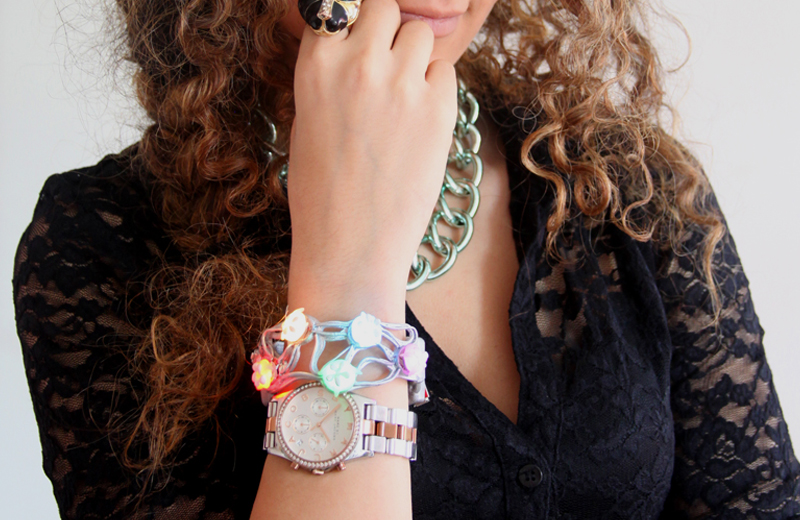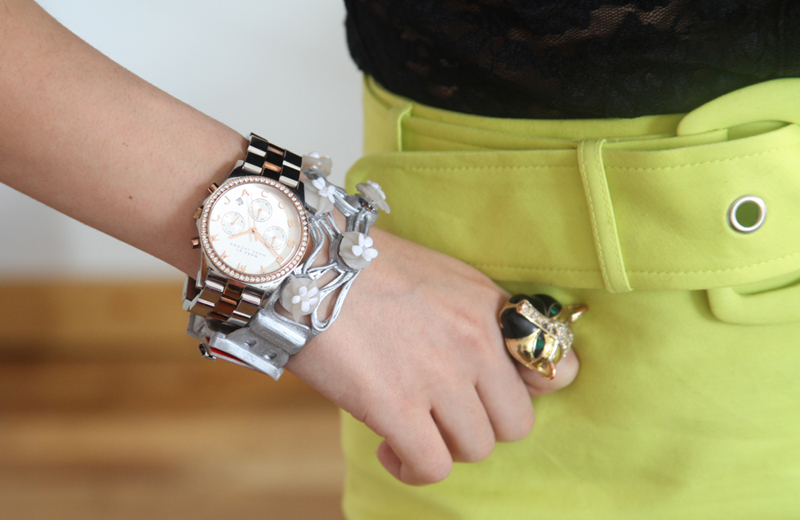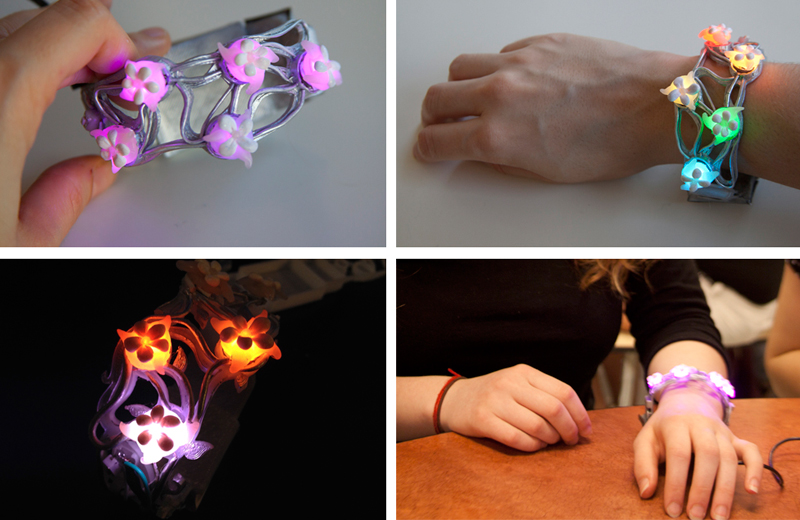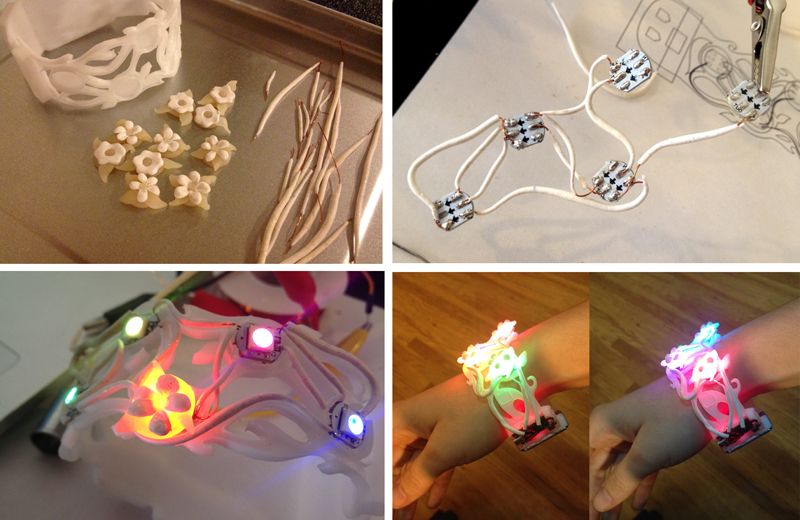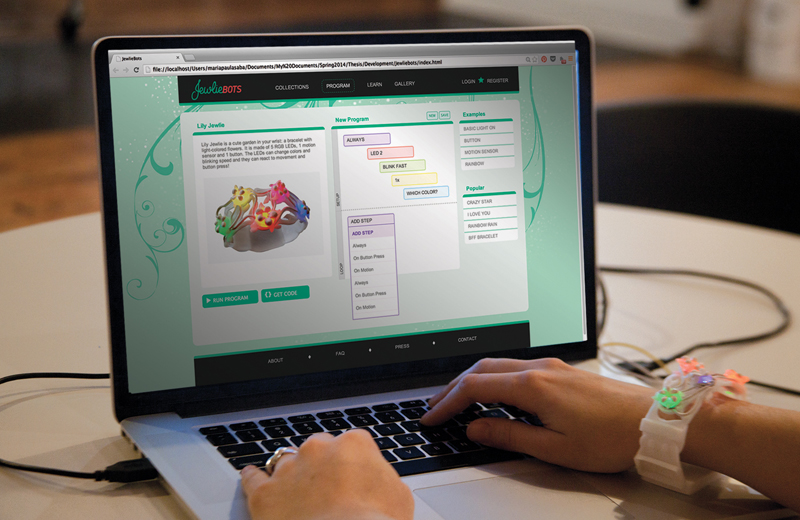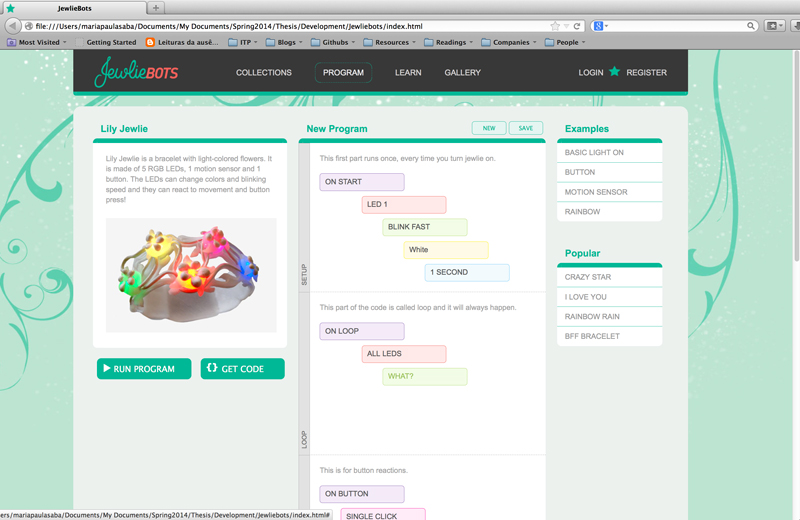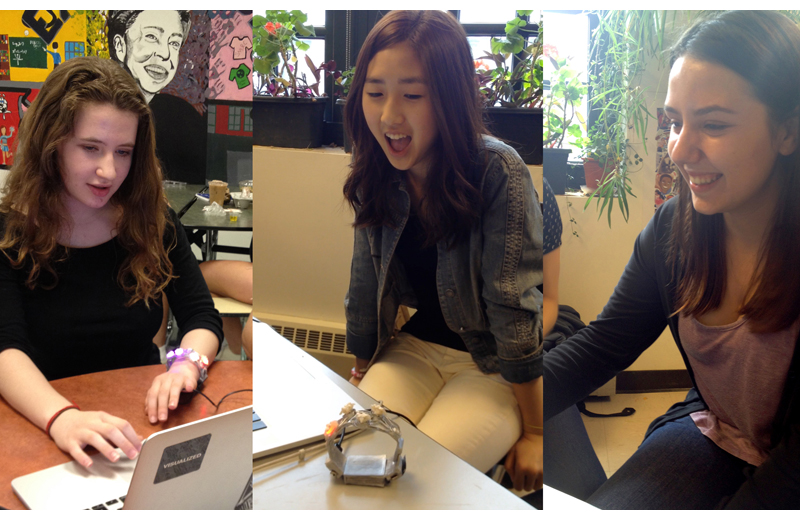Jewliebots - Open-source Programmable Jewelry
Area: Wearables & Interface Design
School: NYU/ITP Thesis 2014
Thesis Advisor: Gabe Barcia-Colombo
Jewliebots is a set of electronic jewelry which introduces software education to teenaged girls in a way that is appealing to them. The jewel can have its appearance and behavior programmed through an easy to use web interface. Jewliebots was started as my thesis at NYU/ITP. My motivation behind it is the fact that tech is a male dominated field. Girls are discouraged to follow a tech career for several reasons, like lack of role models and intimidating environments at CS schools. She++ documentary explains this problem very well. Computer Sciences jobs are increasing in an incredible rate and women won't be able to compete for these jobs if they don't learn programming. This project's goal is to engage and increase girls interest in the workings of technology by showing them that coding can be also beautiful.
Jewliebots first prototype is a bracelet made of a 3D printed flexible shell and sculpted clay. It contains a tiny microcontroller, 5 colored LEDs, an accelerometer and a rechargeable LiPo battery.
Process
I started Jewliebots with a simple question: "Do girls wanna wear light?" To find out it this was something attractive to them, I designed a simple DIY wearable light and ran a participative workshop at the Lower East Side Girls Club. The workshop, which had 20 girls from ages 9 - 17yo, was a huge success. They built all kinds of jewelry - necklaces, bracelets and even phone case attachments and were super happy with it. Some of the results below:
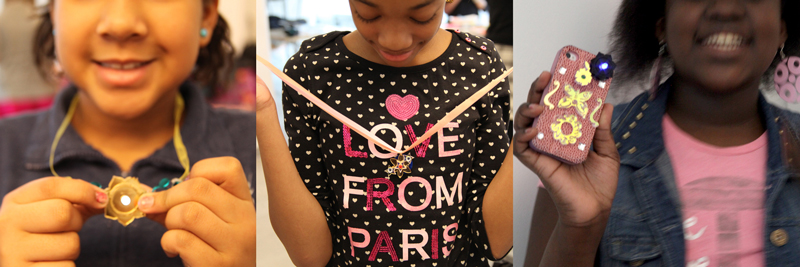
I struggled a lot to learn 3D modelling but I knew that 3D printing would be the easiest way to create a case for my prototype. But before that, I experimented with paper to understand size and polymer clay, not only for volume tests, but as good diffusor for the lights. The final design is a combination of flexible 3D printing and sculpted clay flowers. The wires of the circuit are hidden inside the clay. I've also done a tech research on small arduino clones in the market. I tested a few of them and decided to go with Femtoduino, the smallest with a easy way to upload new codes. Other components I used include: RGB neopixels, a flora accelerometer, a 500mAh LiPo battery and a charger.
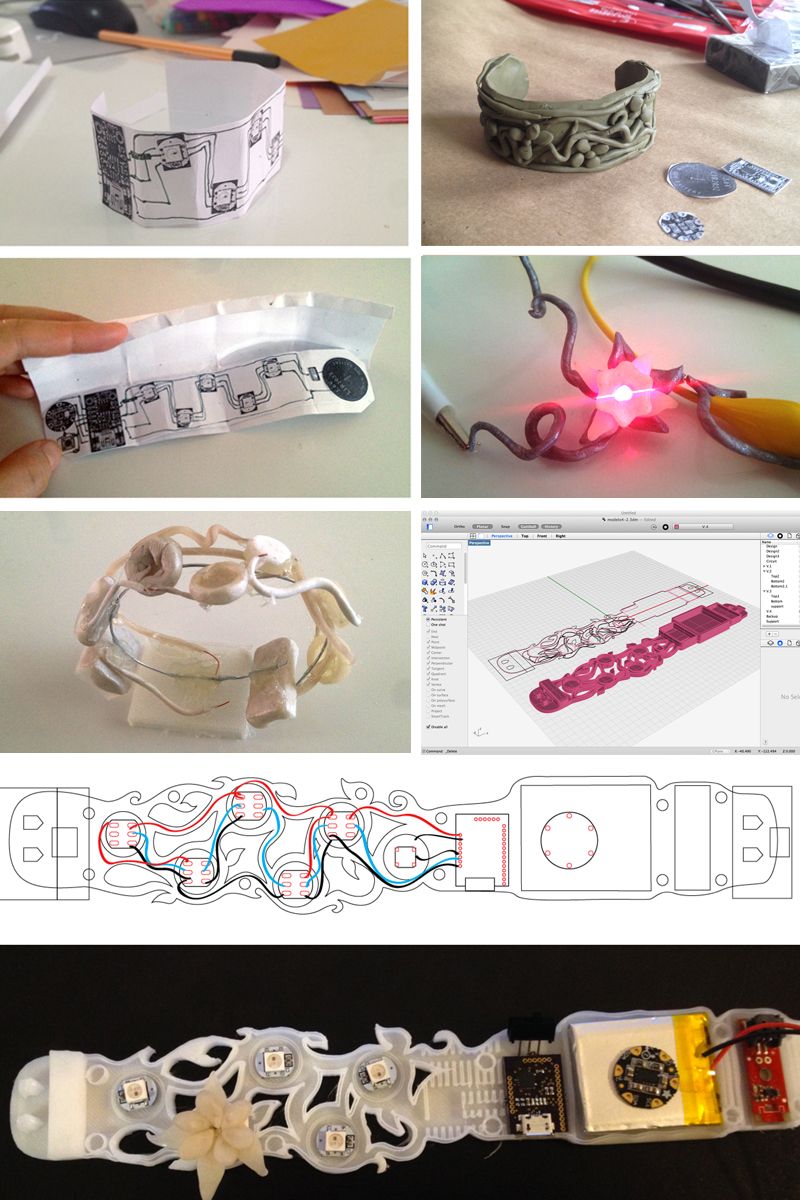
On the software side, I started breaking down the programming parts of this circuit into a workflow. I realized the interface could be a series of questions with answers in a dropdown menu. In this way, the user just had to follow the conversation to create the code.
I've developed a website that gets the answers from those questions and generate the arduino code. It is made in HTML/CSS/Javascript in the front-end and a node application to download the file as .ino. The user needs to open it in the Arduino IDE and upload to the jewel through a micro-USB cable.
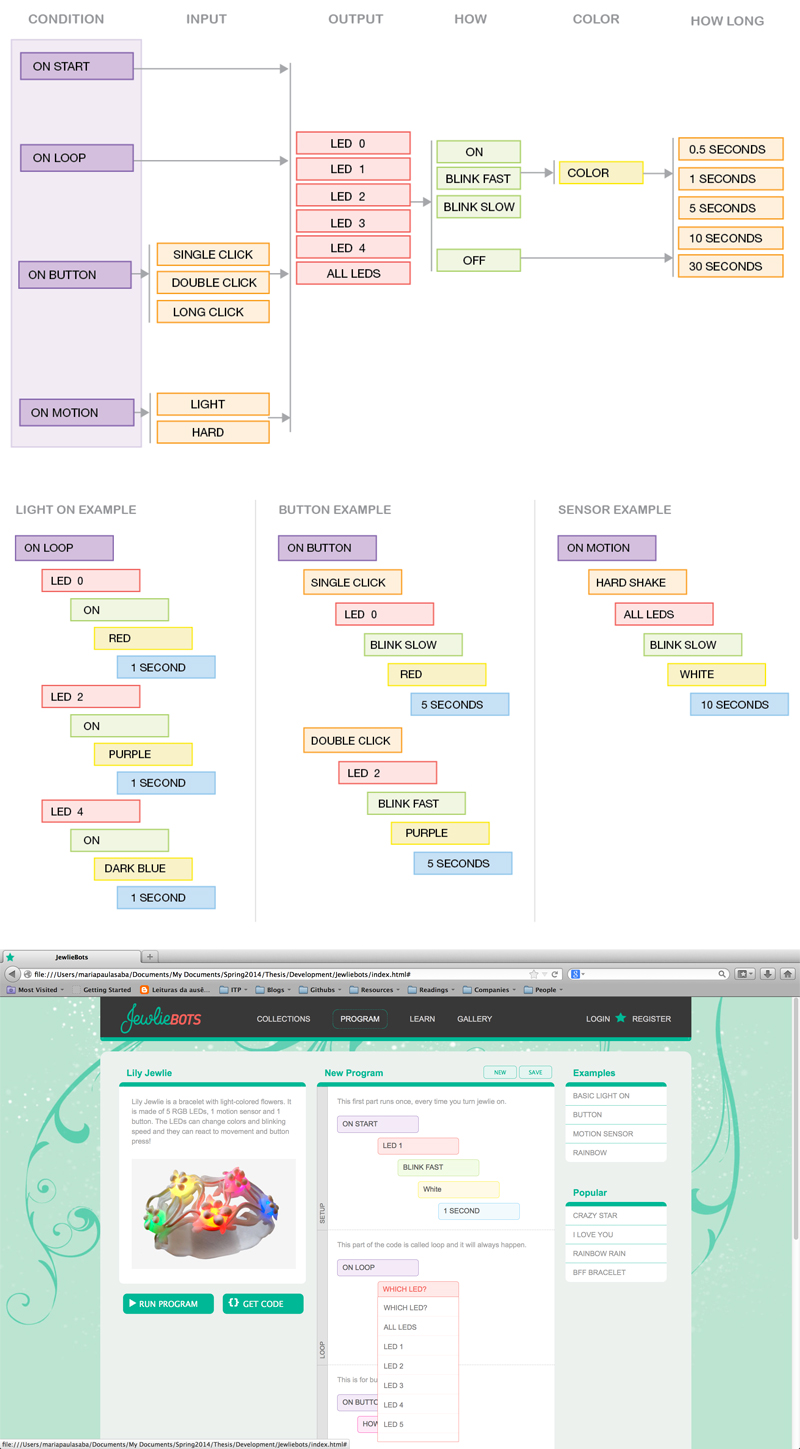
After putting both hardware and software together, I went for user testing in the Lower East Side Girls Club and at Eleanor Roosevelt High School. I tested it with girls from 11-17 years old, and in both places we got great reception. Even though some girls expressed discomfort with technology, all of them could easily adopt the programming interface and expressed great happiness when they see their code happening in the jewel.
I'm happy to announce that Jewliebots is joining the Highway1 team for the Fall 2014 Hardware Incubator program. We're in the process of redesigning it under an industrial perspective and adding new features, such as Bluetooth to upload the code from your phone!


